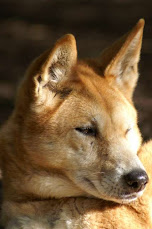
(Lama pacos)
Location: native to Peru, South America
Habitat: Andes Mountains
Young alpacas are known as crias. An adult alpaca is about 36 inches at the shoulders and about 5 feet at the head. They can weigh between 100 and 200 pounds. They have excellent eyesight as well as great hearing. They eat many types of grasses and chew a cud like cattle and sheep. They are gentle creatures. They communicate with a series of ear and tail positions and body postures. They will make humming sounds and a shrill alarm call when threatened by predators. They rarely spit at people unless frightened or abused. Their average life span is 20 years.
Alpacas were first imported into the U.S. in 1984. There are two types of alpacas – the Huacaya and the Suri. Ninety-five percent of alpacas are hyacaya, with full fleece whose crimp or crinkle is found throughout their fleece. The fleece of the suri is made of lustrous, straight fiber which hangs down in “dreadlocks”, giving the suri alpaca a comletely different appearance.
Alpacas were a very important part of the Incan culture in South America. Their fur is considered one of the world finest and most luxrious fibers. Soft as casmere, warmer, lighter and stronger than wool, at one time it was reserved for Incan royalty. This natural fiber comes in over 20 different colors. Today, with many alpaca breeders around the world, this fine fiber is enjoyed by many. The Alpaca Fiber Cooperative of North America (AFCNA) accepts fleece from its members and turns it into fine garments and products.
The Alpaca Owner and Breeder Association (AOBA) is an organization with members around the world. The AOBA started alpaca registry in 1988 and became an offical non-profit organization in September of 1991. This organization is dedicated to increasing the awareness of these animals; to educate people on proper care and breeding practices of alpacas and to promote the growth of the alpaca industry as a whole. Starting with 87 members and 392 alpacas they have now grown to over 3,000 members with over 40,000 alpacas (as of October 2002). The organization works with many national and international organizations such as the The Alpaca Regrstry Inc. (ARI) which has been establised to help ensure accurate documentation of bloodlines. Alpacas must be blood typed in order to be registered and nearly every alpaca in the U.S. is registered.



